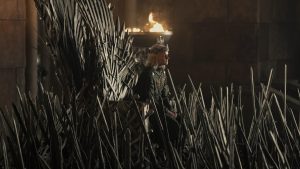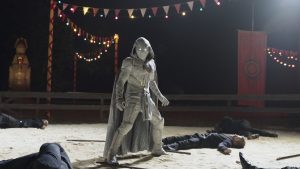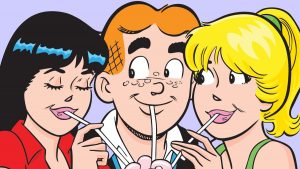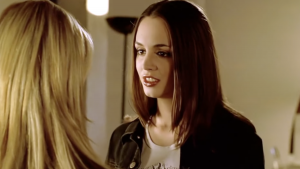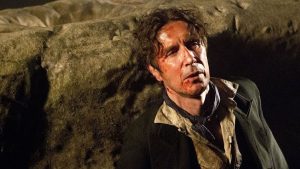
Documentarians are some of the unsung heroes of the film industry. From the deep dives into a historical figure or period to highlighting an otherwise unknown story that deserves an audience, their work and time and effort can bring forth some of the most important films of a year or even decade, despite rarely achieving the box office success of fictional narrative films. That’s the beauty of festivals like Sundance: it’s an opportunity for these films to shine, in a category all their own. With these two films, Frida and Gaucho Gaucho, we gain a perspective into and deeper understanding of an iconic Mexican artist of the 20th century and an Argentine community upholding decades, if not centuries, of tradition.
Frida (dir. Carla Gutiérrez)
With her directorial debut Frida, veteran documentary editor Carla Gutiérrez pulls us into the mind of its eponymous star: the inimitable artist and legend, Frida Kahlo. Using her letters, writings, and illustrated diary to tell her life’s story, enhanced through voice actors providing narration, we get as close to a first-person account as we might ever get. Kahlo’s words are enhanced by stunning visuals as the film intercuts between animations of her famous paintings as well as photos and archival footage, at times hand-tinted for emphasis.
From her beginnings as an aspiring doctor, her near-fatal accident and joining the Communist Party, Frida is a detailed and intriguing chronicling of one of history’s greatest artistic minds. Through her dynamic relationship with painter Diego Rivera and affairs with Leon Trotsky among others, her physical and emotional battles and into her later years, the personal and historical contexts allow the viewer to gain a deeper understanding of her work, even if there were none to begin with. Gutiérrez succeeds at masterfully capturing the story of Frida’s life with a love and reverence for both the artist and her work.
Frida (2024) – source: Sundance Film Festival
Her work highlights some of the most important moments in her life, with powerful and at-times painful imagery that made her the icon she is today. Frida is a documentary for both longtime admirers as well as novice art fans. It tells the complicated story of a complex woman with a passion that matches her own, and gives a riveting insight that feels like you’re hearing it from her own lips. Backed by Amazon, it’s likely you’ll find this on Prime Video soon, and discover it’s worth the watch.
Gaucho Gaucho (dir. Michael Dweck and Gregory Kershaw)
In contrast to the vivid colors of Frida, Gaucho Gaucho, a documentary following the cowboy/cowgirl or Gaucho culture in Argentina, is entirely in black and white. The film opens with a shot of a man on a horse, but not the way you’d think: He’s using the horse as a bed, as he lies on top of the horse with a blanket over them both before they arise and take off. What follows sets the tone of the film: A gorgeous sequence of men racing across the desert on horseback, reins waving and whips flying as they progress in slow-motion. From there, we’re treated to alternating vignettes from the lives of this community: A father teaching his son to sharpen knives and lasso, an old man seeking counsel from a priest, a young woman training to tame horses. Despite being present-day, their eschewing of modernity gives the town a timeless feel. If it weren’t for Santino’s microphone at the horse competitions or his broadcast, this could’ve passed for scenes from a John Ford film in 4K.
Co-directors Michael Dweck and Gregory Kershaw have set out to create what they’ve intended: a film that “paints an Argentinian Western with image and sound that reach an operatic beauty,” as described in the Sundance program. To be sure, every shot is beautifully composed, with a soundtrack worthy of a vinyl pressing that quite literally includes opera and masterful edits between certain sequences. Auguste and Louis Lumière could only dream of shooting actualities such as these. However, in gaining such image and sound, the slice-of-life-vignettes supersede any narrative structure. The young woman, Guada, seems to have the most prominent storyline.
Gaucho Gaucho (2024) – source: Sundance Film Festival
Early on, she disagrees with her teacher about wearing the school uniform, preferring her gaucho ensemble. Later, she struggles to lead a horse through a field, then discusses the dangers of horse taming with her brother, who has suffered almost crippling injuries. She enters a riding competition, but is bucked around until she and the horse venture off-screen. The crowd audibly gasps, and then we cut to Guada limping along on crutches. She heals and continues to pursue her dreams, but a documentary following her alone, fighting to succeed in a seemingly male-dominated occupation and learning about her family’s history as gauchos, would have had more depth and structure.
Regardless, the film stands on its own four hooves. Gaucho Gaucho is a visually stunning slice-of-life doc, showcasing a multi-generational community distant from the modern world. As Santino puts it, “Our traditions come first. Then we’ll let the outsiders in.” Here, the traditions have definitely come first.
Follow our Sundance coverage here.
Does content like this matter to you?
Become a Member and support film journalism. Unlock access to all of Film Inquiry`s great articles. Join a community of like-minded readers who are passionate about cinema – get access to our private members Network, give back to independent filmmakers, and more.
